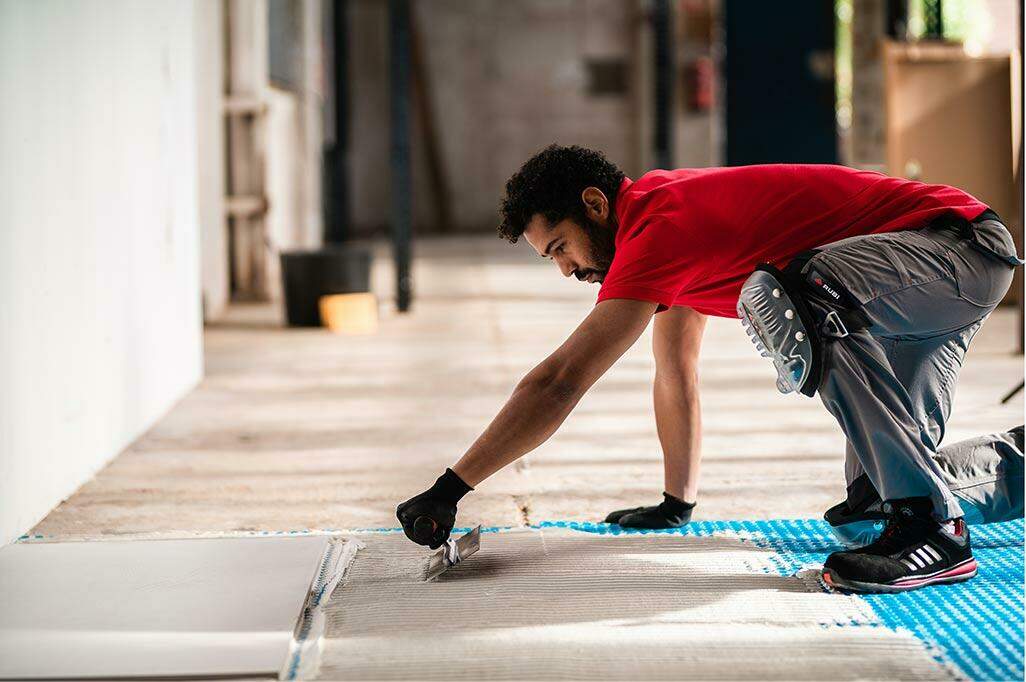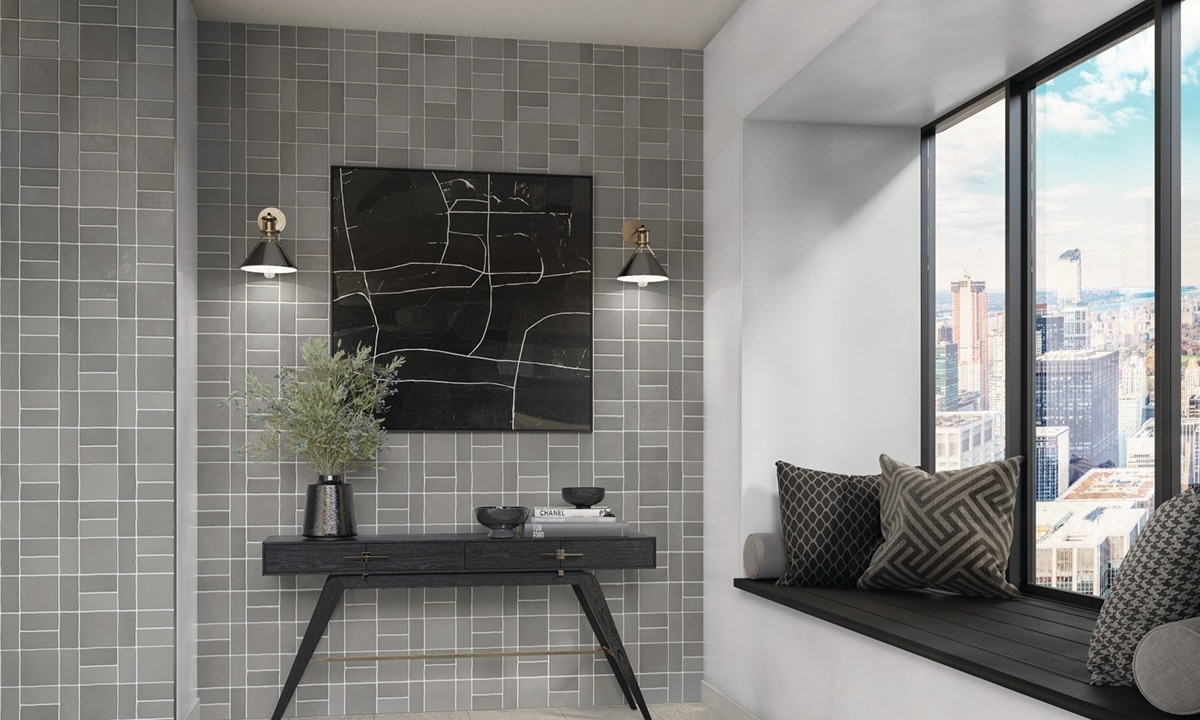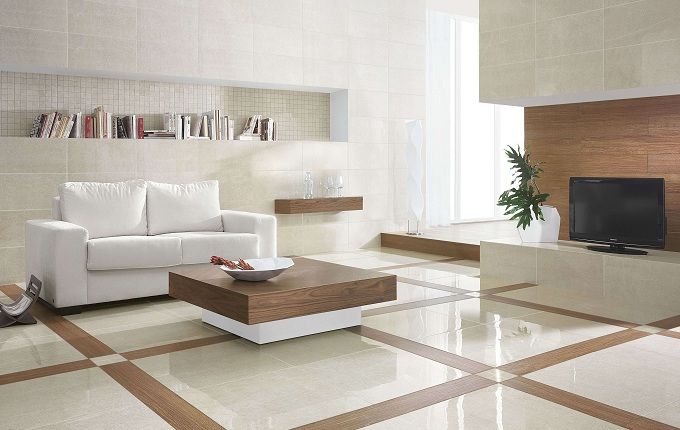
Not all tiles are created equal—especially when moisture is part of the equation. Choosing the right tile material for a specific room involves more than picking a color or finish. Moisture levels, room usage, and foot traffic all affect how different tile types perform over time.
This article helps homeowners, builders, and remodelers select appropriate tile materials by explaining how moisture exposure and room function influence tile durability, maintenance, and safety. Each section explores practical insights for selecting the right tile for bathrooms, kitchens, laundry rooms, living spaces, and more.
Matching Tile to Moisture Exposure and Room Function
Choosing tile based on where it’s being installed is the most reliable way to avoid issues like staining, cracking, and mold. Rooms generally fall into three categories based on how much moisture they regularly experience: dry, moderate, or high-moisture spaces.
In dry areas like living rooms or bedrooms, almost any tile will work if comfort and aesthetics are the main concern. Kitchens and mudrooms often face spills or humidity, so they require more durable, moisture-tolerant options. Bathrooms and laundry areas, on the other hand, demand high-performance tile that won’t absorb water or become dangerously slippery.
Understanding how these environmental factors affect tile can help prevent costly damage and ongoing maintenance headaches.
Evaluating Common Tile Materials
Different tile materials respond differently to moisture. Each has a unique structure, absorption rate, and maintenance need. Here’s how popular tile types stack up.
Porcelain Tile
Porcelain is one of the most reliable options for damp environments. It’s fired at higher temperatures than ceramic, giving it a dense structure and a water absorption rate below 0.5%.
This makes it ideal for high-moisture areas like bathrooms, laundry rooms, and even outdoor spaces. It resists staining, supports heavy loads, and comes in many finishes. For wet floors, opt for a matte or textured surface to reduce slipping.
Ceramic Tile
While similar to porcelain, ceramic is slightly more porous. It works well in areas with moderate moisture exposure, like kitchens and powder rooms, but isn’t ideal for standing water or extreme humidity.
Glazed ceramic tiles resist stains and are easier to clean. However, in wet-floor areas like showers or laundry rooms, it’s safer to go with porcelain or a sealed ceramic with sufficient slip resistance.
Natural Stone
Materials like slate, marble, and travertine add a distinct look but require more upkeep. Most natural stones are porous, so they absorb water unless sealed. That makes them riskier in wet areas unless maintained regularly.
Some stones, such as slate, offer better grip underfoot and can be used in entryways or certain bathroom zones. Marble, while beautiful, becomes slippery when wet and should be used cautiously.
Glass Tile
Glass tile is best used on walls rather than floors. It doesn’t absorb water and offers a sleek, reflective surface that’s perfect for shower surrounds or kitchen backsplashes.
Its downside is poor traction, making it unsafe for flooring. It also tends to show smudges more readily, though it resists mold and staining well.
Luxury Vinyl Tile (LVT)
Though not a traditional tile, LVT performs well in high-moisture areas. It’s water-resistant, affordable, and mimics the look of ceramic or wood. It’s often used in basements and laundry rooms where waterproofing is a priority.
However, it’s not as long-lasting as porcelain or stone, and it can fade or warp with prolonged sun exposure or heat.
How Room Type Influences Tile Choice

Each room presents unique challenges when selecting tile, especially in homes where different areas transition from dry to wet zones.
Bathrooms
Bathrooms experience the highest water exposure in any residential setting. Floors, walls, and shower enclosures all need tiles that are water-resistant, durable, and easy to clean. Porcelain is the most reliable choice for flooring and showers. For walls and accents, ceramic and glass tiles add visual interest without sacrificing performance.
Slip resistance is especially important on bathroom floors. A textured or matte finish reduces fall risk, particularly around showers or tubs.
Kitchens
In kitchens, spills, heat, and foot traffic are the primary concerns. Ceramic and porcelain tiles both perform well here. Ceramic works best for backsplashes and walls, while porcelain is a safer option for high-traffic floors.
Tiles with low porosity and a stain-resistant glaze are easiest to clean. Larger format tiles help reduce grout lines, cutting down on maintenance and mold buildup.
Laundry Rooms
Laundry rooms often face humidity, detergent spills, and the possibility of flooding. Porcelain is the most water-tolerant option, but LVT can also be practical for DIY installations or budget-friendly remodels.
Look for flooring options that won’t absorb moisture and that can handle minor shifts in subfloor movement. Sealing grout lines improves durability in this space.
Living Areas and Bedrooms
In dry rooms like living rooms, home offices, and bedrooms, tile selection focuses on design and comfort. Ceramic and porcelain tiles are common, though larger, warmer-toned tiles are often chosen for comfort and aesthetic appeal.
Some homeowners opt for wood-look porcelain tiles in these spaces to blend durability with a softer visual.
Moisture Absorption and Slip Ratings
Tile materials are rated by their moisture absorption and slip resistance—two metrics that affect performance and safety in wet spaces.
Moisture absorption is measured by how much water a tile absorbs as a percentage of its weight. Porcelain ranks the lowest, while unsealed natural stone ranks higher.
Slip resistance is typically rated using the coefficient of friction (COF). Wet-area floor tiles should have a COF rating of 0.6 or higher. Many tile manufacturers now label products with recommended use locations to simplify selection.
Material Comparison Table
| Tile Type | Moisture Resistance | Maintenance | Best Rooms |
|---|---|---|---|
| Porcelain | Excellent | Low | Bathrooms, Kitchens, Showers |
| Ceramic | Moderate | Low to Moderate | Kitchens, Dry Floors |
| Natural Stone | Varies (Needs sealing) | High | Entryways, Accent Walls |
| Glass | High (for walls) | Moderate | Shower Walls, Backsplashes |
| LVT | High | Low | Laundry Rooms, Basements |
Common Questions
How do I know if a tile is water-resistant?
Check the tile’s absorption rating. Porcelain tiles absorb less than 0.5% water and are rated for wet environments. Labels or spec sheets typically include this information.
Is it okay to use ceramic tile in a shower?
Only if it’s rated for wet areas and installed properly. Even then, porcelain offers better long-term performance for shower floors due to its lower absorption and durability.
Does grout need to be sealed in wet rooms?
Yes. Grout is porous and will absorb moisture if not sealed. Use a water-resistant grout and seal it regularly, especially in bathrooms and laundry rooms.
Can natural stone handle high humidity?
With proper sealing, natural stone can be used in high-humidity areas. However, maintenance is ongoing and performance depends on the specific type of stone.
Conclusion
Choosing tile based on room use and moisture exposure prevents long-term issues with mold, cracking, and wear. Porcelain stands out as the most adaptable material for wet or variable environments, while ceramic and natural stone serve well in specific conditions when maintained properly.
Understanding absorption rates, slip resistance, and finish options helps ensure tiles last longer and perform safely across different rooms in a home. Selecting the right tile for the right space is a practical decision that protects both the home and its value.
FAQs
What tile is best for wet floors? Porcelain tile is best for wet floors because it absorbs very little moisture and offers durable, slip-resistant options.
Can I install glass tile on bathroom floors? No. Glass tiles are too slippery for floors when wet and are better suited for walls and backsplashes.
Do I need to seal ceramic tile? Glazed ceramic tiles usually don’t require sealing, but unglazed ceramic or the grout around the tiles should be sealed to prevent water intrusion.
What’s the best tile option for a humid basement? Porcelain or luxury vinyl tile (LVT) both work well. Porcelain is more durable, but LVT is easier to install and more forgiving on uneven subfloors.
How often should stone tile be sealed? Sealing frequency depends on usage and the stone type, but generally, natural stone tiles should be sealed once a year in moisture-prone areas.
Reviewer: Chloe Martinez brings 8 years of experience in home improvement. Feedback from Chloe helped shape this post to better support companies working to strengthen their reputation and expand their reach.


